Nico Martin
Progressive Web Apps - The next big thing
#1about 3 minutes
Comparing the open web with native app development
Native apps offer a great user experience but create high maintenance costs for developers, which is a problem the open web can solve.
#2about 1 minute
What are Progressive Web Apps (PWAs)?
PWAs are a new generation of web applications designed to be fast, integrated, reliable, and engaging, combining the best of the web and native apps.
#3about 3 minutes
Using the Web App Manifest for native integration
The Web App Manifest is a JSON file that allows a web app to be added to the home screen and run in a standalone, full-screen mode.
#4about 2 minutes
Designing for offline-first experiences
Treat network connectivity as a progressive enhancement by separating your application into a static app shell and dynamic data for offline use.
#5about 3 minutes
Storing dynamic data with IndexedDB and the IDB library
Use the asynchronous IndexedDB API, simplified with the IDB promise-based wrapper, to store large amounts of dynamic application data in the browser.
#6about 2 minutes
How service workers operate outside the browser tab
A service worker is a special JavaScript file that runs in a separate scope, remains active even when the browser is closed, and has its own event system.
#7about 5 minutes
Implementing caching strategies with service workers and Workbox
Intercept network requests using the service worker's fetch event to serve assets from a cache, and simplify this logic using the Workbox.js library.
#8about 2 minutes
Ensuring data persistence with the Storage API
Use the Persistent Storage API to request that the browser protects your application's cached data and IndexedDB from being automatically cleared.
#9about 5 minutes
How web push notifications work with VAPID
Web push notifications rely on a push service, a service worker to receive messages, and the VAPID protocol to securely identify your application server.
#10about 2 minutes
Best practices for requesting user permissions
Avoid asking for permissions like push notifications on page load and instead provide context to the user to create a better experience.
#11about 6 minutes
Case study: Building a PWA for a refugee camp
A real-world PWA for the Moria refugee camp demonstrates the benefits of offline capability, low entry barrier, and fast release cycles for critical communication.
#12about 3 minutes
PWA browser support and the Apple WebKit problem
While most PWA features are well-supported, Safari on iOS lags behind, particularly with push notifications, due to Apple's WebKit engine constraint.
Related jobs
Jobs that call for the skills explored in this talk.
Matching moments

10:04 MIN
How progressive web apps enhance the web platform
Project Fugu: Extending the web
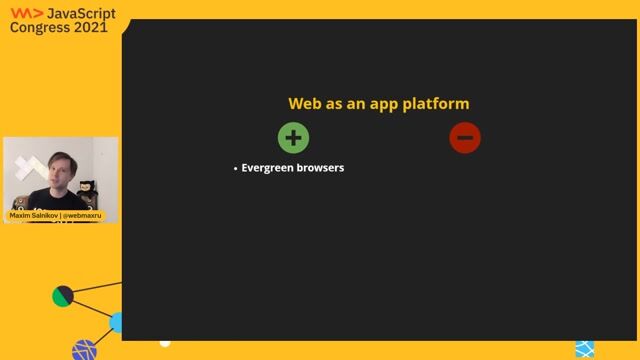
03:47 MIN
Understanding the web's evolution into an app platform
Native Web Apps: Are We There Yet?
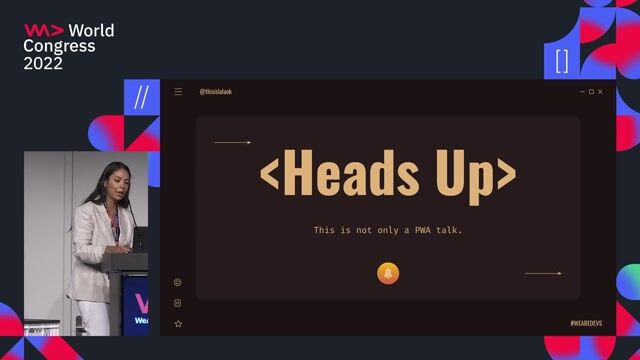
01:32 MIN
Understanding the core principles of PWAs
Is your Progressive Web App Lazy? How to read and improve your PWA Performance
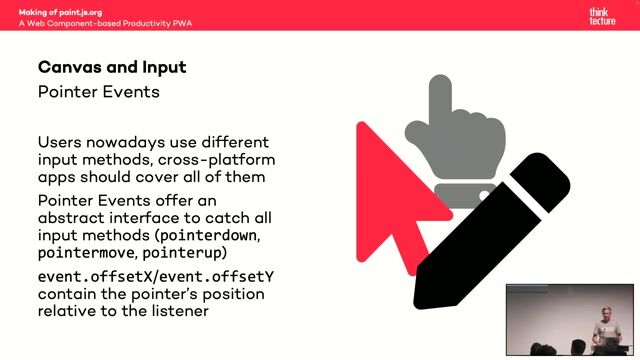
19:46 MIN
PWA fundamentals for installation and offline support
Making of paint.js.org—a Web Component-based Productivity PWA
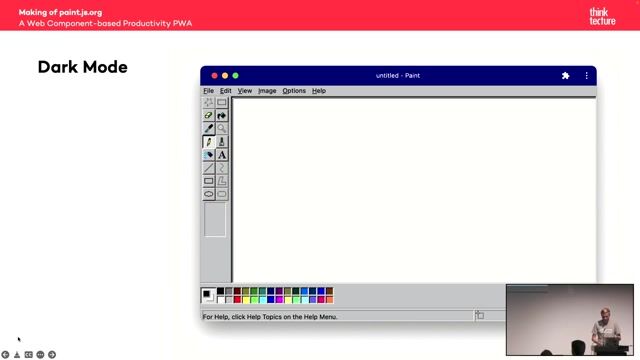
39:57 MIN
Summary and real-world examples of advanced PWAs
Making of paint.js.org—a Web Component-based Productivity PWA

00:27 MIN
Introducing Project Fugu and its goals for PWAs
Project Fugu: Progressive Web Apps, Superpowered

00:33 MIN
Defining the three core features of progressive web apps
PWAs in 2021
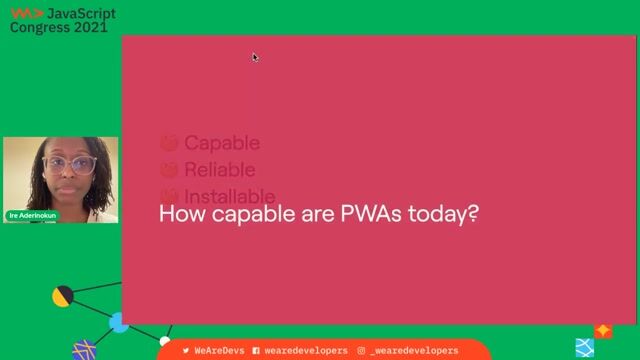
05:54 MIN
Expanding PWA capabilities with modern web APIs
PWAs in 2021
Featured Partners
Related Videos
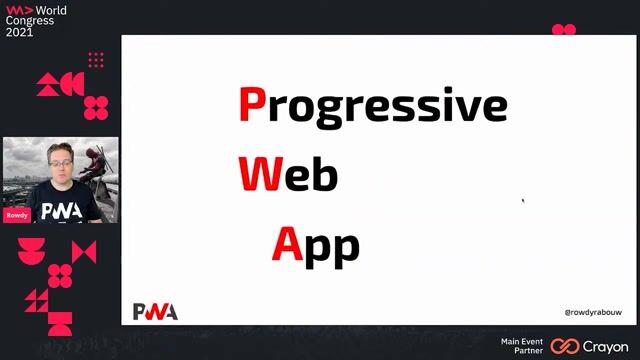 43:06
43:06PWA Fundamentals: websites with superpowers
Rowdy Rabouw
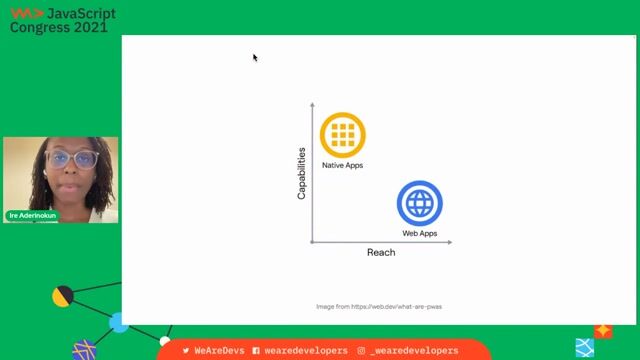 41:49
41:49PWAs in 2021
Ire Aderinokun
 29:57
29:57Is your Progressive Web App Lazy? How to read and improve your PWA Performance
Laura Morinigo
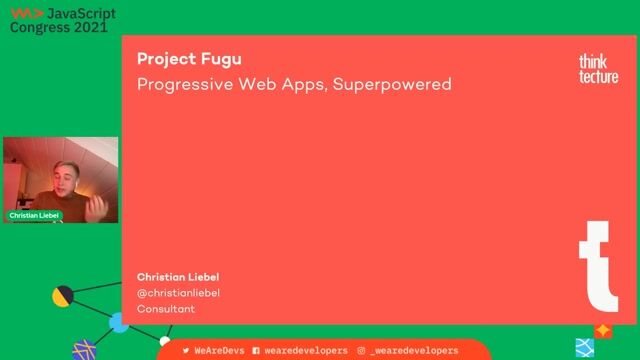 45:20
45:20Project Fugu: Progressive Web Apps, Superpowered
Christian Liebel
 44:40
44:40Native Web Apps: Are We There Yet?
Maxim Salnikov
 52:01
52:01Unleash your web skills on native!
Rowdy Rabouw
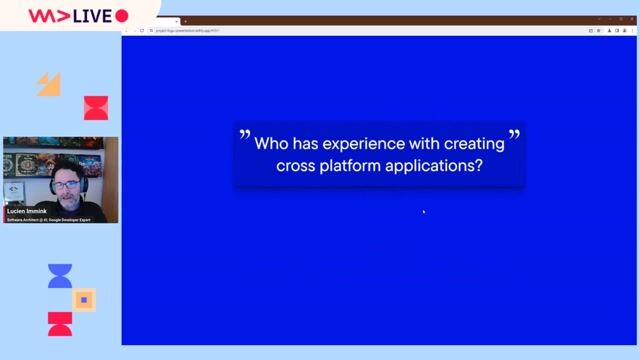 58:12
58:12Project Fugu: Extending the web
Lucien Immink
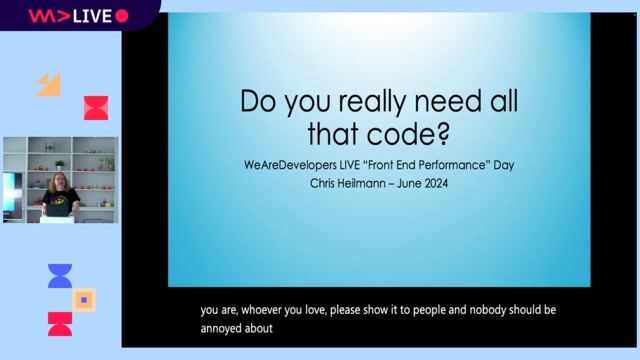 14:44
14:44Catching up on the basics you don't really need that much code
Chris Heilmann
From learning to earning
Jobs that call for the skills explored in this talk.




Desarrollador/a Web Interactivo (Next.js / Supabase / PWA / API)
SIGGO
Barcelona, Spain
API
React
Next.js
PostgreSQL








Frontend Web Developer - JavaScript | React | Angular | Vue.js | Bootstrap | Tailwind | HTML | CSS
Tech Solutions Gmbh
Illingen, Germany
API
CSS
GIT
HTML
Scrum
+5


Web Developer - Wordpress, Next.js
Barques
Birmingham, United Kingdom
Remote
Intermediate
PHP
CSS
DNS
GIT
+11






